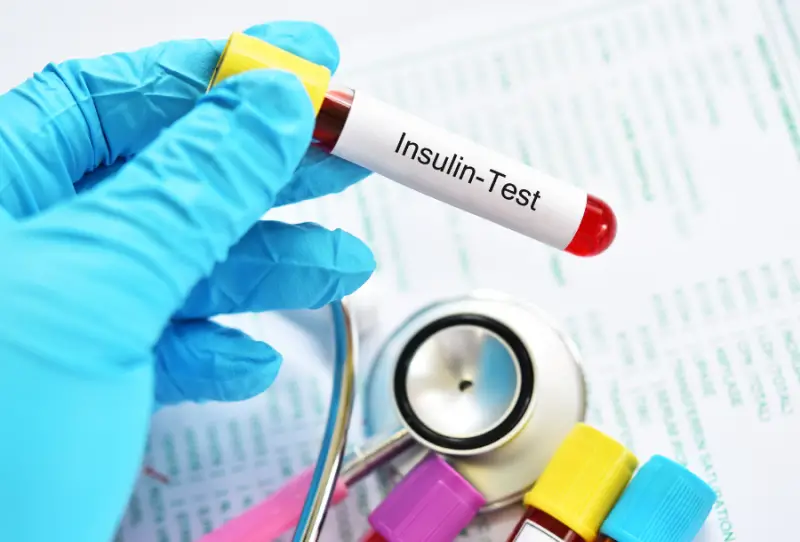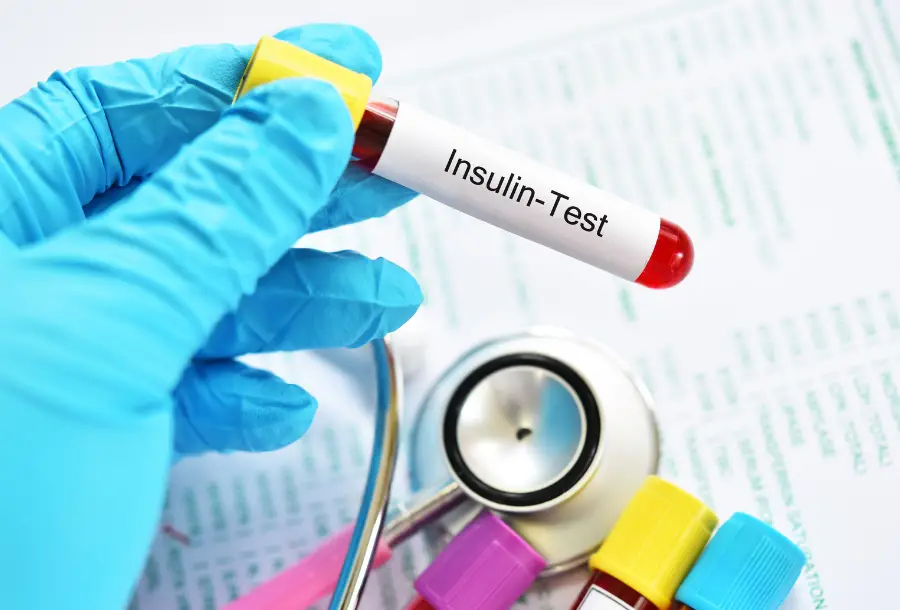Fasting insulin is one of the most overlooked yet powerful indicators of metabolic health. While most people are familiar with fasting blood glucose or hemoglobin A1c, fasting insulin provides an earlier and often more accurate picture of how the body manages sugar. Understanding what counts as a normal fasting insulin level can help identify risks for conditions like insulin resistance, prediabetes, and type 2 diabetes long before glucose numbers begin to rise.
In this complete guide, we will break down what fasting insulin means, how it is measured, what normal ranges look like, and why it matters for your health. We will also look at factors that affect insulin levels, lifestyle strategies to optimize them, and when you should consider testing. By the end, you will have a clear and comprehensive understanding of this important biomarker.
What Is Fasting Insulin?

The Role of Insulin in the Body
Insulin is a hormone produced by the pancreas that helps regulate blood sugar levels. After eating, carbohydrates are broken down into glucose, which enters the bloodstream. Insulin acts like a key, allowing glucose to move into muscle, liver, and fat cells where it can be used for energy or stored for later use. Without insulin, the body cannot effectively manage glucose, leading to high blood sugar and metabolic complications.
During fasting, typically after at least 8 to 12 hours without food, insulin levels should drop because there is no active intake of glucose. Measuring insulin in this state helps assess how well the pancreas and cells are functioning when the body is at rest.
Why Fasting Matters in Measurement
A fasting insulin test gives a more accurate picture of baseline insulin activity. Eating before the test would cause insulin spikes, making it impossible to determine whether high levels are due to food intake or underlying metabolic dysfunction. This is why patients are usually asked to fast overnight before having the test performed.
How Fasting Insulin Differs from Glucose
Fasting glucose reflects how much sugar is in the blood, while fasting insulin reflects how hard the body is working to keep that sugar under control. A person may have normal glucose but elevated insulin, indicating that the body is overproducing insulin to maintain balance. This is often the first warning sign of insulin resistance.
What Is a Normal Fasting Insulin Level?
Standard Reference Ranges
Normal fasting insulin levels can vary slightly depending on the laboratory, but most medical guidelines consider values between 2 to 20 µIU/mL as the general reference range. However, many experts believe that optimal fasting insulin should be much lower than the upper limit of this range.
-
Ideal levels: 2–8 µIU/mL
-
Borderline or early insulin resistance: 8–15 µIU/mL
-
Likely insulin resistance: Above 15–20 µIU/mL
These values show that while your lab report might label an insulin level of 18 as “normal,” it may still indicate metabolic stress. For preventive health, staying closer to the lower end of the range is considered more favorable.
Fasting Insulin Levels Chart
| Fasting Insulin Level (µIU/mL) | Category | Interpretation |
|---|---|---|
| 2 – 8 | Optimal | Indicates good insulin sensitivity and healthy metabolic function. |
| 8 – 15 | Borderline | Suggests early insulin resistance; lifestyle adjustments recommended. |
| 15 – 20 | High | Likely insulin resistance; medical evaluation may be necessary. |
| Above 20 | Very High | Strong indication of insulin resistance, prediabetes, or diabetes risk. |
Differences Across Populations
Age, ethnicity, and lifestyle can all influence what is considered a healthy insulin level. Children and adolescents may naturally have slightly higher fasting insulin due to growth and hormonal changes. Likewise, individuals with higher body fat percentages or sedentary lifestyles tend to run higher fasting insulin compared to leaner, active individuals.
The Importance of Context
It’s critical not to interpret fasting insulin in isolation. A single reading may be misleading due to temporary factors such as stress, illness, or poor sleep. Physicians often pair fasting insulin with fasting glucose to calculate the HOMA-IR score (Homeostatic Model Assessment of Insulin Resistance), which provides a more complete assessment of insulin sensitivity.
Why Normal Fasting Insulin Levels Matter
Early Warning for Metabolic Syndrome
High fasting insulin is often the first indicator of metabolic syndrome—a cluster of risk factors that include abdominal obesity, high blood pressure, abnormal cholesterol, and impaired glucose control. Identifying elevated insulin early allows for interventions before more serious conditions develop.
Link to Insulin Resistance and Type 2 Diabetes
Chronically elevated insulin means the body is struggling to keep blood sugar in check. Over time, cells become resistant to insulin’s effects, forcing the pancreas to produce more. Eventually, this cycle can lead to type 2 diabetes when the pancreas can no longer keep up.
Impact on Cardiovascular Health
High fasting insulin has been linked to increased risk of hypertension, high triglycerides, and low HDL cholesterol. Together, these factors raise the likelihood of heart disease. Studies suggest that insulin resistance may contribute to atherosclerosis and other vascular problems, even in people without diabetes.
Connection to Weight Gain and Hormonal Health
Insulin is also a fat-storage hormone. Elevated fasting insulin makes it easier to gain weight and harder to lose it. For women, high insulin levels may worsen conditions like polycystic ovary syndrome (PCOS), leading to irregular menstrual cycles and fertility challenges.
Factors That Affect Fasting Insulin Levels
Diet and Nutrition
The foods you eat have the most direct impact on insulin. Diets high in refined carbohydrates and sugars cause repeated spikes in insulin, which over time can keep fasting insulin elevated. Conversely, diets rich in fiber, lean protein, and healthy fats promote better insulin sensitivity and lower baseline insulin.
Physical Activity
Regular exercise improves how cells respond to insulin, allowing glucose to be absorbed more efficiently. Both aerobic activities and strength training have been shown to lower fasting insulin levels, making physical activity one of the most effective strategies for improving insulin health.
Body Weight and Composition
Excess body fat, especially around the abdomen, strongly correlates with higher fasting insulin levels. Fat cells release inflammatory signals that interfere with insulin signaling, creating a cycle of resistance. Losing even a modest amount of weight can significantly improve fasting insulin levels.
Sleep and Stress
Poor sleep quality and chronic stress elevate cortisol, a hormone that interferes with insulin’s ability to function. Over time, this can contribute to higher fasting insulin and insulin resistance. Prioritizing adequate sleep and stress-reduction practices such as mindfulness or yoga can improve metabolic health.
Medications and Medical Conditions
Certain medications, such as steroids and some psychiatric drugs, can raise fasting insulin. Conditions like PCOS, Cushing’s syndrome, and hypothyroidism are also associated with higher insulin levels. It is important to consider these factors when interpreting test results.
How Is Fasting Insulin Measured?
The Blood Test Procedure
The fasting insulin test is a simple blood draw performed after at least 8–12 hours of fasting. A small sample is taken from a vein in the arm and sent to the lab for analysis. Results are typically available within a day or two.
Interpreting Results with Glucose
Fasting insulin is often measured alongside fasting glucose. Using both values, doctors can calculate the HOMA-IR score. Generally, a HOMA-IR above 2.0 suggests reduced insulin sensitivity, while values above 2.5–3.0 indicate significant insulin resistance.
Frequency of Testing
Most people do not routinely get fasting insulin tested unless there are risk factors such as obesity, family history of diabetes, PCOS, or unexplained difficulty losing weight. However, many experts advocate for more widespread use of fasting insulin testing as part of preventive care.
How to Maintain Healthy Fasting Insulin Levels
Dietary Strategies
Reducing consumption of processed carbohydrates and added sugars is the most direct way to lower fasting insulin. Replacing these with whole foods such as vegetables, lean meats, fish, nuts, seeds, and whole grains helps the body stabilize blood sugar without demanding high insulin output.
Some individuals find that intermittent fasting or time-restricted eating also improves insulin sensitivity by giving the body periods of rest from insulin spikes. However, these strategies should be personalized and ideally supervised by a healthcare provider.
Physical Activity and Movement
Consistent exercise plays a major role in lowering fasting insulin. Engaging in at least 150 minutes of moderate aerobic exercise per week, combined with resistance training, has been shown to improve insulin sensitivity. Even small lifestyle changes, such as walking after meals, can make a measurable difference.
Weight Management
For individuals with elevated insulin, modest weight loss of 5–10% of body weight often produces significant improvements. This does not necessarily require extreme dieting but rather a consistent approach to healthier eating and regular movement.
Sleep Hygiene and Stress Management
Improving sleep quality by maintaining a regular sleep schedule, reducing screen time before bed, and creating a calm sleep environment can reduce insulin resistance. Stress-reducing techniques such as meditation, deep breathing, and physical relaxation practices are also beneficial.
Medical Support
In cases where lifestyle changes are not sufficient, doctors may recommend medications such as metformin to improve insulin sensitivity. These are usually considered for individuals with prediabetes, PCOS, or early signs of insulin resistance.
When to Talk to a Doctor
If you have risk factors such as being overweight, having a family history of diabetes, experiencing irregular menstrual cycles, or struggling with unexplained fatigue and weight gain, it may be worth discussing a fasting insulin test with your healthcare provider.
Unexplained difficulty losing weight despite a healthy lifestyle is another sign that insulin resistance may be at play. Early detection allows for lifestyle adjustments before more serious conditions develop.
Conclusion
Fasting insulin is a vital yet underutilized marker of metabolic health. While typical laboratory ranges may list values up to 20 µIU/mL as normal, evidence suggests that staying closer to the lower end of the spectrum provides the best protection against insulin resistance, diabetes, and cardiovascular disease.
By understanding what normal fasting insulin levels are and how to interpret them, you can take proactive steps to optimize your metabolic health. Through dietary improvements, consistent exercise, adequate sleep, and stress management, most people can maintain insulin levels that support long-term well-being.
FAQs About Normal Fasting Insulin Levels
What is the normal range for fasting insulin?
Most laboratories define the normal range as 2–20 µIU/mL, but many experts suggest that optimal fasting insulin should be closer to 2–8 µIU/mL for better metabolic health.
Is fasting insulin the same as fasting glucose?
No, fasting insulin measures how much insulin your pancreas produces, while fasting glucose measures the sugar level in your blood. Both tests together provide a clearer picture of insulin sensitivity and metabolic health.
Can you have normal blood sugar but high fasting insulin?
Yes. This situation is common in early insulin resistance. Your body may produce extra insulin to keep blood sugar normal, which hides underlying metabolic problems until later stages.
How often should fasting insulin be tested?
Fasting insulin is not always part of routine blood work, but it may be checked if you have risk factors such as obesity, family history of diabetes, or symptoms like unexplained fatigue or weight gain. Doctors may recommend testing every 1–2 years if you are at risk.
What happens if fasting insulin is too high?
Chronically high fasting insulin is often a sign of insulin resistance. Over time, this condition increases the risk of type 2 diabetes, cardiovascular disease, and weight-related health issues.
Can lifestyle changes lower fasting insulin?
Yes. Eating a balanced diet, reducing processed carbohydrates, engaging in regular physical activity, maintaining a healthy weight, improving sleep quality, and managing stress all help lower fasting insulin naturally.
Should children or teenagers have fasting insulin tests?
In most cases, fasting insulin tests are not routine for children. However, doctors may recommend them for children or teens with obesity, signs of insulin resistance, or a strong family history of type 2 diabetes.
References
-
U.S. National Library of Medicine. Fasting Insulin Test. https://medlineplus.gov
-
American Diabetes Association. Standards of Care in Diabetes. https://diabetes.org
-
Centers for Disease Control and Prevention (CDC). Diabetes and Insulin Resistance. https://cdc.gov
-
National Institute of Diabetes and Digestive and Kidney Diseases (NIDDK). Insulin Resistance and Prediabetes. https://www.niddk.nih.gov



